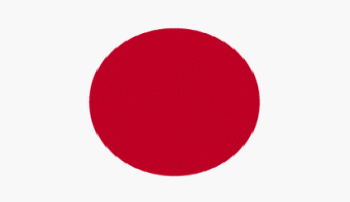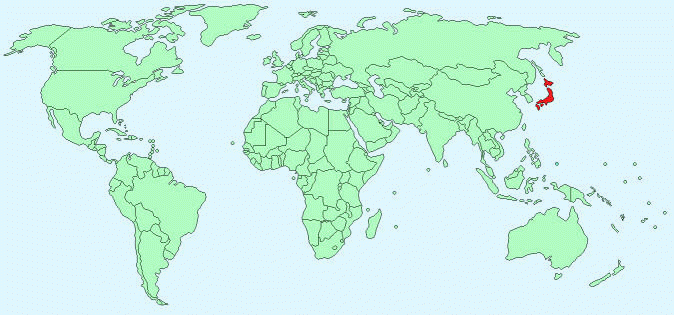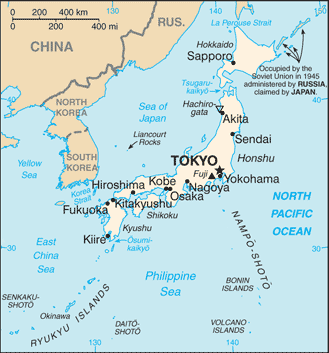Japan


Continent – Asia
Region – Eastern Asia
Size – 377,915 km²
Geography – chain of islands, mostly rugged hills, mountainous
Language – Japanese
Religion – Shintoism 83.9%, Buddhism 71.9%, Christianity 2%, other 7.8% (many people practice both Shintoism and Buddhism)
Monetary Unit – Yen
Natural Resources – no minerals, fish
Agriculture – rice, sugar beets, vegetables, fruit; pork, poultry, dairy products, eggs; fish
Industry – motor vehicles, electronic equipment, machine tools, steel and nonferrous metals, ships, chemicals, textiles, processed foods

Neighbouring Countries – None (island group)
Population – 127,103,388 (2014 estimate)
Population Growth Rate – -0.13%
Average Life Expectancy – 84.46
Capital City – Tokyo (37,217,000)
Highest Mountain – Fujiyama (3,776m)
Longest River – Shinano (367 km)
Climate – Tropical south wet and warm 18°C to 30°C, cool temperate north – cold winters – -5°C to 4°C, warm summers – 15°C to 22°C
Yearly Rainfall – South – 200 cm (approx) mostly in June to September, North – 120cm (approx)
Plant Life – fir, spruce, larch, oak, maple, linden, birch, ash, elm, walnut, cherry trees, sugarcane and citrus fruits
Animal Life – Japanese macaque, brown bear, ermine, mink, raccoon dog, fox, wolf, walrus, seal, spiny mouse, ryukyu rabbit, sika deer, giant salamander
Marine Life – crabs and shrimp, many fish species
Bird Life – Cormorants, herons, swans, ducks, cranes, sparrows, thrushes, robins, swallows, nightingales
Harvard Reference for this page:
Heather Y Wheeler. (2015). Japan. Available: https://www.naturalhistoryonthenet.com/Facts_Figures/Country_Facts/japan.htm. Last accessed Monday, July 18, 2016
Facts and Figures Pages
